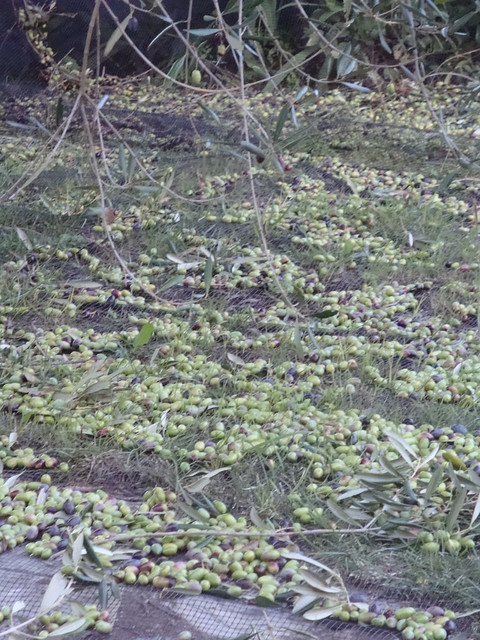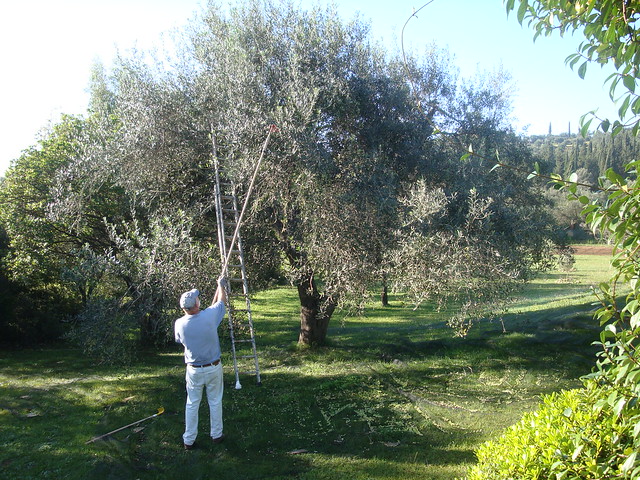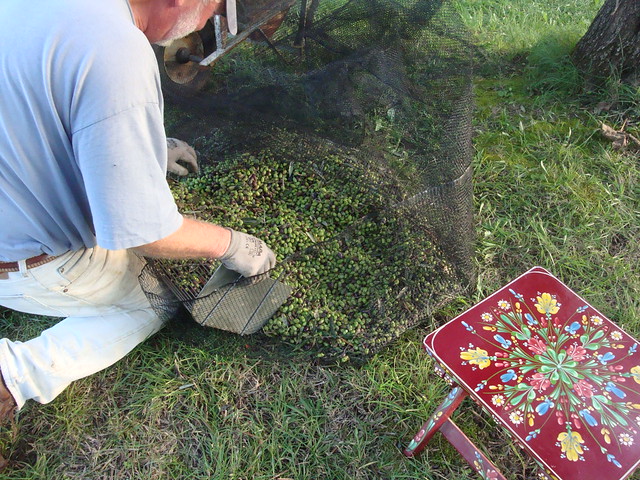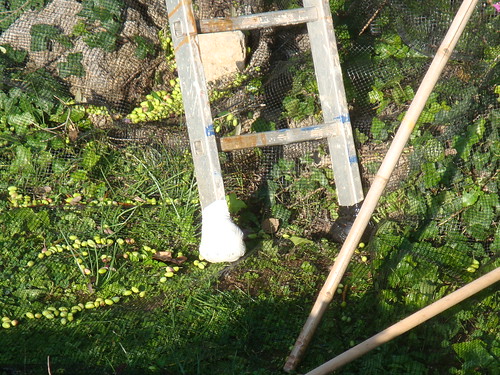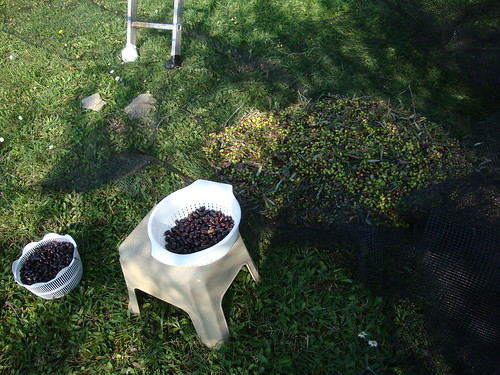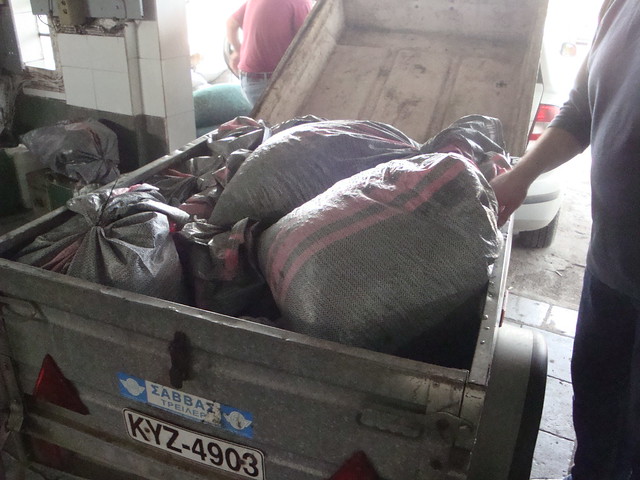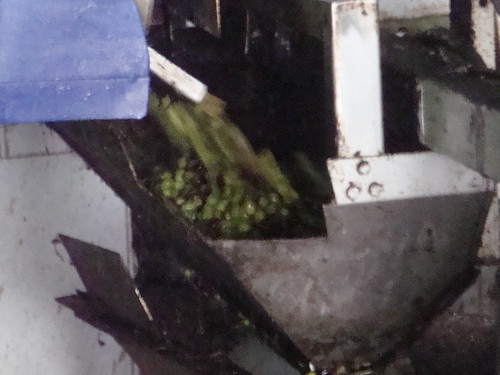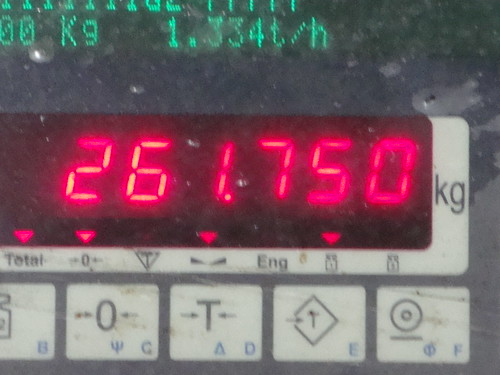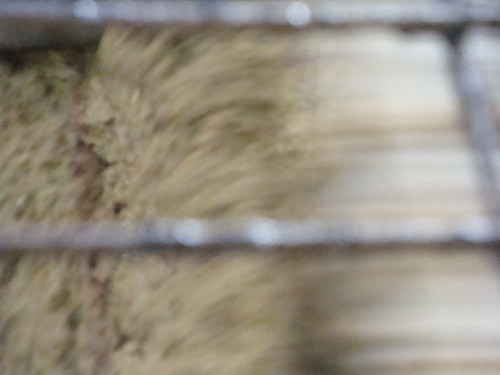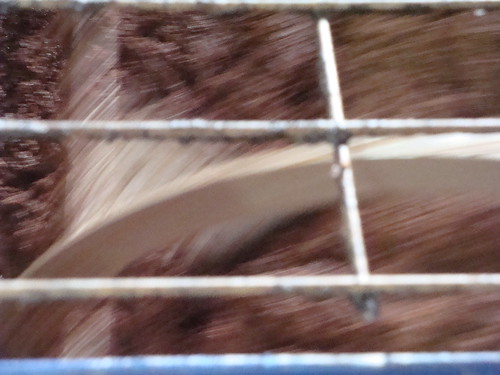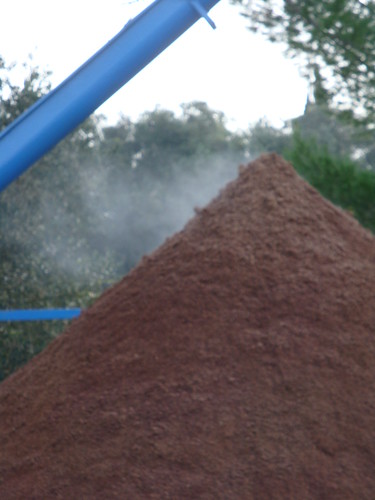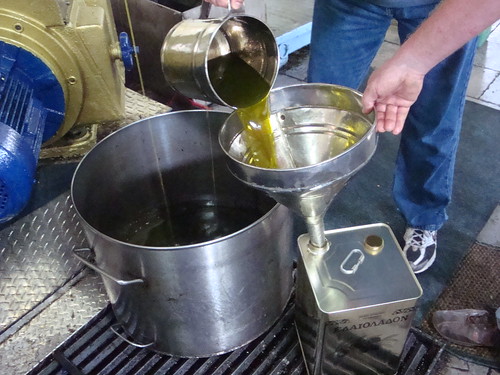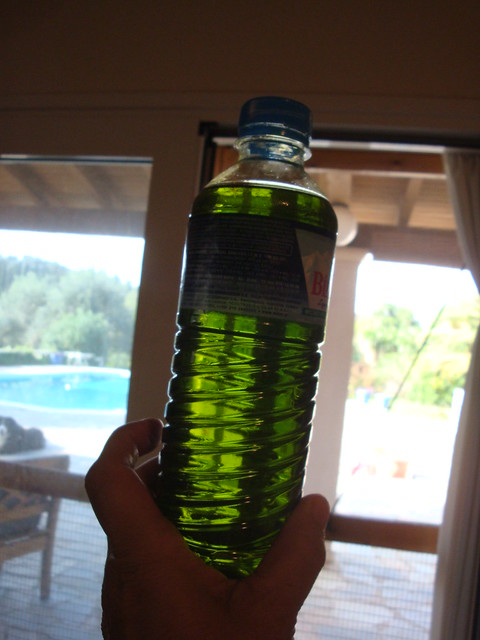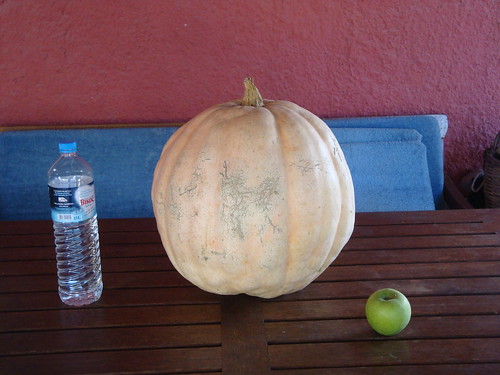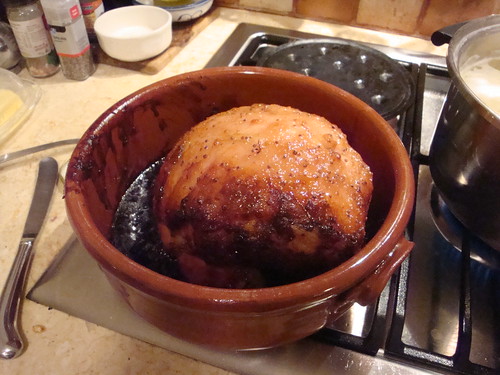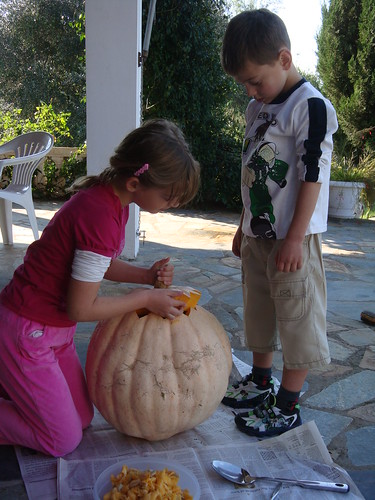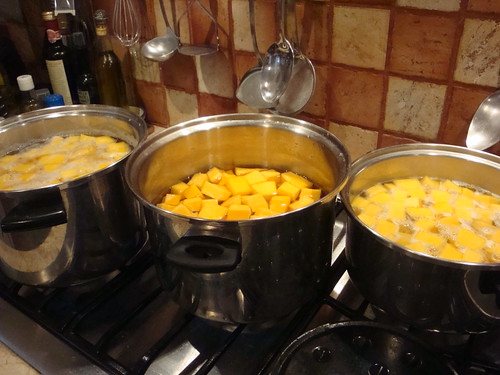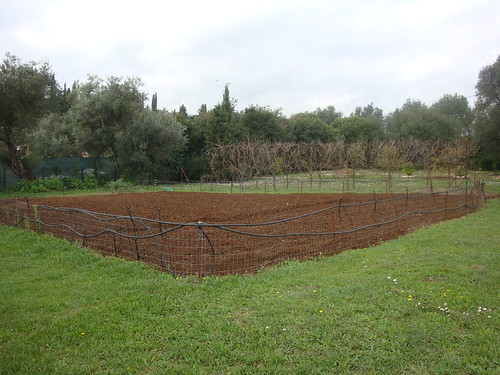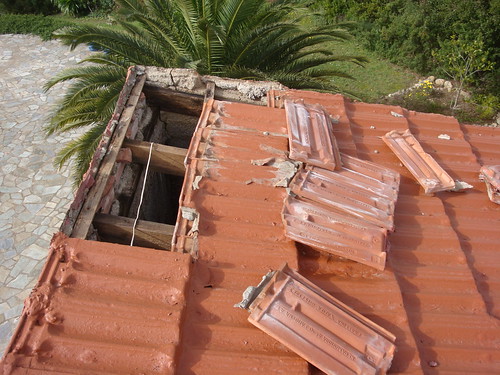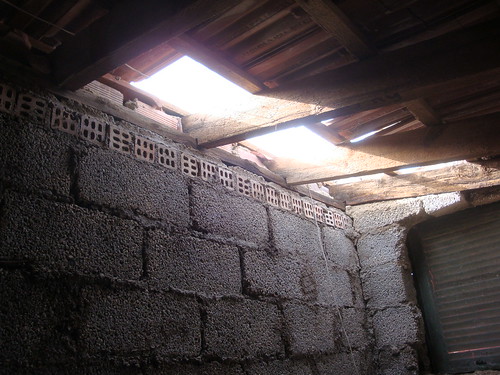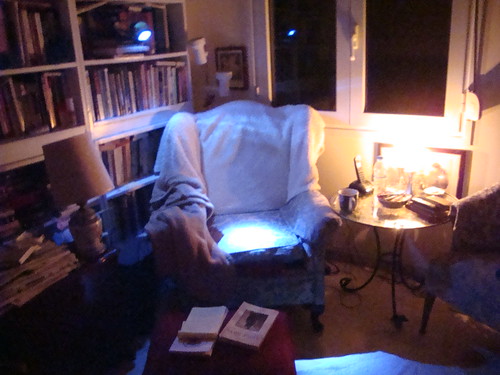Sounds like a disease (or a rock band)! Actually it's more like tempering them from the hard, bitter, little, pit-filled, oil makers, into something you might put into a lovely glass of martini...
I'd like to say I meant to post this earlier, really! ---- good excuse this time!--- because we've been in the middle of rather amazing and, in a awesome way, lovely thunderstorms. Normally that wouldn't be an issue, except here on Corfu it is.
 |
| tonight's sunset |
We have managed to fry so many electronic items, as most of the other inhabitants of the island, that it's pretty much a dark joke amongst all and sundry. First off our electricity comes into the house at supposedly 220 volts (in the US, it's 110 volts). That apparently is the baseline, because when we had it checked back when we discovered nothing in the house was properly grounded (we kept getting nasty shocks just touching light switches, never mind loading the dishwasher!) our electrical guy told us that it was fluctuating but generally running pretty hot... WAY over 220 and in fact at one point it peaked at 260.
This doesn't mean that we're all about to die or anything, it just means that if you are an electrical appliance living in this house, you are living a very hard life and your lifespan could be shorter than appliances that, say, live in France or Denmark.
 |
| last evening. |
Combine that with spectacular thunderstorms with chain lightening and incredible sky to ground, and sky to trees and of course sky to power line, flashes we have regularly and you're talking MAJOR power surges.
Usually though electronic death to computers and cordless phones, is because the surge fries computers and routers via the phone lines, I presume when the lightening hits telephone poles and lines. (we ALWAYS remember to unplug the phone lines from the router box, as well as the regular plugs- now. We've gone through three. See? You CAN teach old dogs new tricks.)
Anyway, we've had the power off and on and off (and on and off and on) for the past two days as well as a few mighty "crack-BOOM" flashes to keep the dog awake (and her faithful companion- me) most of the night. It rumbled and grumbled long past the gale force winds and violent rains.
Last night, as the power was skipping around, we decided to go into town for our annual McDonald's hamburger, only to be caught in a real misery of a downpour that included, on our way back home, a good piece of the road going out of town, near the airport, that was door deep in run off water! (tres scary!) I would have taken pictures but I was too busy helping T drive!
So. On to the olive lecture... and the hypothetical curing of olives- which I will be planning to do for real this year, to go along with our wine, olive oil AND homemade vinegar (ah! but that's another post!!)
Here's a picture of the three sizes of olives we have. (that is a one euro coin, which is a about the same diameter as a US quarter)
The smallest one is the wild olive (of which we have three trees) The middle sized one is the one we mostly collect and make our olive oil from; and the big is a Kalamata and we've only just recently planted them (one). We have also planted seven more trees that are more like the middle sized one, but it will be at least 10 more years before they'll be producing much of anything.
I always thought when I read Lord of the Rings, that the Ents were related to the olive trees.
So. For the curing of olive to turn them into those lovely plump and delicious additions to our diets, one must make a commitment of fresh water, salt, and most importantly: Time.
Gourmets from the Roman empire to the present day have valued the unripe fruit, steeped in brine, as challenging to the palate. The bitter juice deposited during pressing of the oil (called amurca), and the astringent leaves of the tree have many virtues attributed to them by ancient authors. Olive oil as a cooking medium emerged as an economical alternative to the butter and animal fats used elsewhere.
Olives are high in monounsaturated fat, iron, Vitamin E, and dietary fiber.
These are a few
simple methods used in many Greek homes.
Water Curing "Smashed" or "Cracked" Olives
(recommended for large green olives)
Wash olives. With stone or mallet, crack the meat of the olive, taking care not to bruise the pit. Put the olives in a pan and cover with cold water for 6-8 days, changing the water twice a day, morning and evening, until the bitterness is gone (taste to test). When ready, fill the pan with brine * (about 1 part sea salt to 10 parts water) and lemon juice (about 1 part lemon juice to 10 parts water), transfer to jars if desired, and refrigerate for several hours before eating. **
Brine Curing
(recommended for black olives)
Wash olives. With a sharp knife, make a cut in the meat of the olive (top to bottom) without cutting the pit. In a pan, soak the olives in brine (1 part salt to 10 parts water). Make sure the olives are submerged (use something to weight them down) and cover. Cure the olives for 3 weeks, shaking the pan each day and changing the brine each week, then taste for bitterness (they could take up to 5-6 weeks depending on the olives). When they taste the way you want, place in jars with brine (1 part sea salt to 10 parts water), add 4 tablespoons of red wine vinegar and top with a layer of olive oil.
Dry (Salt) Curing
(recommended for large black olives)
Outdoors, in a basket, burlap bag, or wooden box lined with burlap (that allows air to circulate), layer olives with coarse sea salt (you'll need about 1 pound of salt for every 2 pounds of olives). Leave the olives outside (with plastic underneath to catch the juices that drain) for 3-4 weeks, shaking daily and adding a little more salt every 2-3 days. Taste for bitterness (rinsing the olive first). When no longer bitter, you can either shake off excess salt and keep them that way, or shake off the excess salt and dip them quickly in boiling water to get rid of the salt. They can be marinated for a few days in olive oil to regain plumpness (this type of curing will shrivel them), or just coated well with olive oil (using your hands) before eating.
Dry (Salt) Curing
(recommended for small black olives)
In glass jars, alternate layers of olives with coarse salt. Every day for 3 weeks, shake well and add more salt to absorb the juices. Test for bitterness (rinsing the olive first). Continue to cure if bitterness remains, otherwise, add warm water to cover and 4 tablespoons of good quality red wine vinegar, and top with a layer of olive oil. They will be ready to eat after 4-5 days.
Oil Curing
Cover in olive oil and leave them alone for several months. Test for taste.
Tips About Brine:
* * The water/salt ratio is perfect when a raw egg floats in it.
* ** For cracked olives, when they're ready to eat, transfer to a brine that's less salty to keep for long periods.





